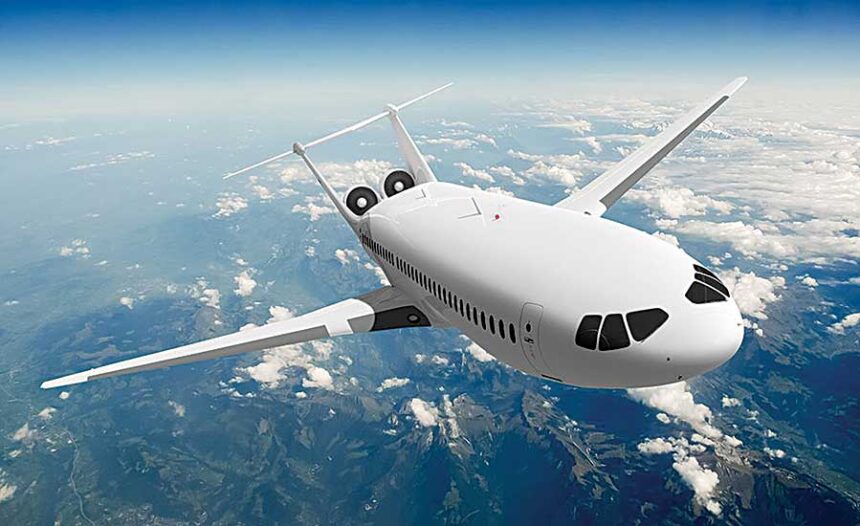As air travel becomes increasingly common and environmental concerns grow, the aviation industry constantly seeks ways to improve efficiency and reduce fuel consumption. One promising avenue for achieving these goals is using innovative materials in aircraft construction. How do new engineered plastics reduce aircraft weight and increase performance?
New engineered plastics reduce aircraft weight by up to 50% compared to traditional metal components while maintaining or improving strength and durability. This weight reduction leads to increased fuel efficiency and better overall performance.
While this brief answer highlights the significant impact of engineered plastics on aircraft design, it only scratches the surface of this fascinating topic. Continuing to read will give you a deeper understanding of the specific types of plastics being used, their unique properties, and how they revolutionize various aspects of aircraft construction and operation.
What Types Of Engineered Plastics Are Being Used In Modern Aircraft?
The aviation industry employs various advanced engineered plastics to reduce weight and improve performance. One of the most prominent materials is carbon fiber reinforced polymer (CFRP), which combines the strength of carbon fibers with the flexibility of plastic resins. CFRP is used extensively in aircraft structures, including fuselages, wings, and tail assemblies.
Another important engineered plastic is polyetheretherketone (PEEK), known for its exceptional strength-to-weight ratio and resistance to high temperatures. PEEK is often used in aircraft interiors and certain engine components, where its heat resistance is particularly valuable.
Thermoform plastics are also utilized in aircraft interiors, creating lightweight, durable panels and components with complex shapes. These materials are easily moldable and recyclable, making them cost-effective and environmentally friendly. They’re used in various applications, from cabin interiors to structural components.
How Do Engineered Plastics Improve Aircraft Performance Beyond Weight Reduction?
While weight reduction is a primary benefit of engineered plastics in aircraft, these materials offer numerous other advantages contributing to improved performance. For instance, many engineered plastics have superior fatigue resistance compared to traditional metals. This means that components made from these materials can withstand repeated stress cycles without developing cracks or failing, leading to increased durability and longer service life for aircraft parts.
Engineered plastics also offer excellent corrosion resistance. Unlike metal components that may rust or corrode over time, plastic parts maintain their integrity in harsh environments, including exposure to various chemicals and moisture. This not only enhances safety but also reduces maintenance costs and downtime.
Furthermore, some engineered plastics have unique electrical properties that make them ideal for aircraft electrical systems. Certain plastics can act as insulators or even as lightweight alternatives to metal in electromagnetic shielding applications, contributing to the overall efficiency and reliability of aircraft systems.
What Challenges Does The Aviation Industry Face In Adopting Engineered Plastics?
Despite the numerous benefits of engineered plastics in aircraft design, their adoption is not without challenges. One significant hurdle is the high initial cost of these materials compared to traditional metals. While the long-term benefits often outweigh the upfront expenses, the initial investment can be a barrier for some manufacturers.
Another challenge lies in the complexity of certifying new materials for use in aircraft. The aviation industry is heavily regulated, and any new material or component must undergo rigorous testing and approval before it can be used in commercial aircraft. This can be time-consuming and expensive, potentially slowing the adoption of new engineered plastics.
Lastly, there’s the challenge of developing new manufacturing processes and techniques for these advanced materials. Many engineered plastics require specialized equipment and expertise to process and shape effectively. This necessitates significant investment in new tools, training, and possibly even facilities, which can be a substantial undertaking for aircraft manufacturers.
How Are Engineered Plastics Impacting Aircraft Maintenance And Repair?
The introduction of engineered plastics in aircraft construction has significantly altered maintenance and repair practices in the aviation industry. One of the most notable changes is the reduction in corrosion-related maintenance. Unlike metal components prone to rust and corrosion, plastic parts remain largely unaffected by environmental factors, leading to fewer inspections and replacements.
However, working with engineered plastics requires new skill sets and tools. Maintenance crews need specialized training to properly inspect, repair, and replace plastic components. This has led to a shift in the skillset required in the aviation maintenance industry, with an increasing emphasis on understanding composite materials and their unique properties.
Interestingly, some engineered plastics offer improved repairability compared to traditional materials. For instance, thermoplastic composites can be repaired using heat welding techniques, allowing for quicker and more cost-effective repairs in some cases. This can lead to reduced aircraft downtime and lower maintenance costs over the aircraft’s lifetime.
What Role Do Engineered Plastics Play In The Future Of Sustainable Aviation?
As the aviation industry faces increasing pressure to reduce its environmental impact, engineered plastics play a crucial role in developing more sustainable aircraft. The weight reduction achieved through the use of these materials directly translates to lower fuel consumption and reduced emissions, aligning with the industry’s goals of improving fuel efficiency and meeting stricter environmental regulations.
Moreover, some engineered plastics are being developed with sustainability in mind. Researchers are exploring bio-based plastics and recycled materials for use in aircraft components. These materials could potentially reduce the carbon footprint of aircraft manufacturing and contribute to a more circular economy in the aviation industry.
Engineered plastics are also enabling the development of more aerodynamic designs. Their flexibility and moldability allow for the creation of complex shapes to improve an aircraft’s aerodynamic efficiency. This reduces fuel consumption and opens up possibilities for entirely new aircraft designs that could revolutionize air travel.
Looking further into the future, engineered plastics may play a significant role in developing electric and hydrogen-powered aircraft. These new propulsion systems require lightweight materials to offset the weight of batteries or fuel cells, making engineered plastics an essential component in the next generation of environmentally friendly aircraft.
Looking to the Horizon
Now that you understand the significant impact of engineered plastics on aircraft weight, performance, and sustainability, explore how these innovations might affect your air travel experiences. The next time you board a flight, identify areas where engineered plastics might be used, from the cabin interior to the aircraft’s structure. This awareness will deepen your appreciation for modern aviation technology and help you recognize the ongoing efforts to make air travel more efficient and environmentally friendly.






